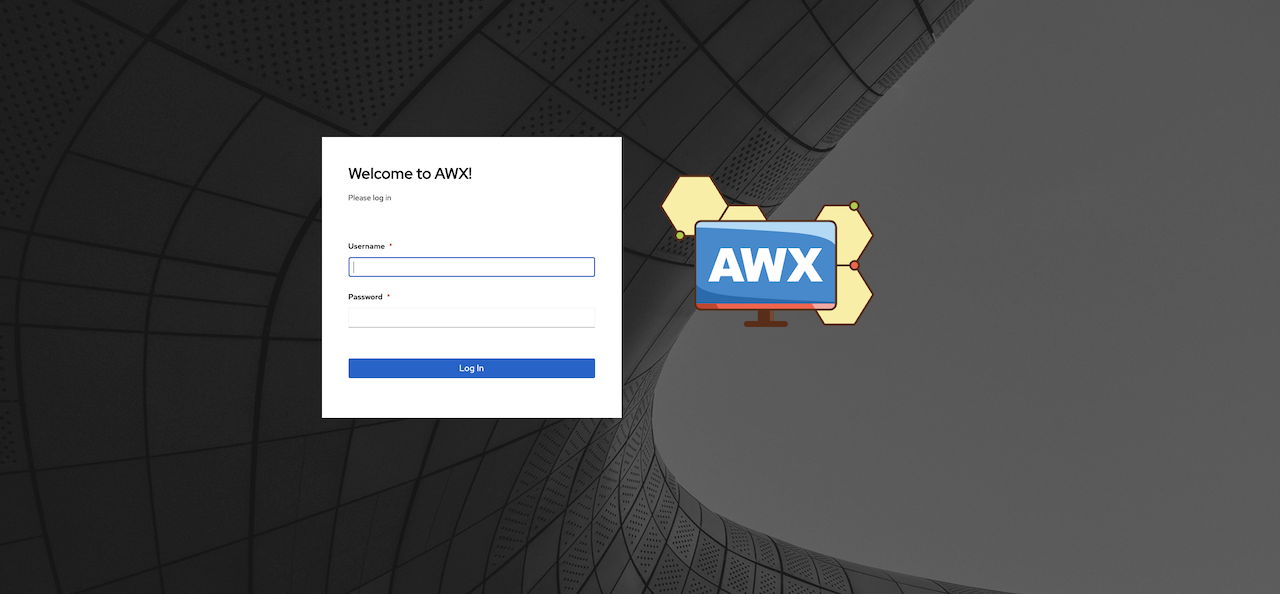3 min to read
Install AWX with MicroK8s cluster on Ubuntu Server
How-to

AWX Tower is a free, open-source automation tool for managing Ansible playbooks, inventories, and workflows. It simplifies the management of Ansible by providing a centralized dashboard for organizing, scheduling, and monitoring Ansible jobs across multiple environments. In this post, I’ll show you how to set up your very own AWX tower with Kubernetes cluster using Ubuntu and MicroK8s and Helm, all for free!
1. Prerequisites
- Ubuntu Server with MicroK8s cluster: https://bgx4k3p.github.io/blog/kubernetes-microk8s-ubuntu
- Make sure to have over 6Gb RAM and 4CPUs! AWX won’t install properly otherwise.
2. Enable Required AddOns
ansible@kube:~$ microk8s enable dns hostpath-storage ingress rbac helm
3. Install AWX Operator
AWX Operator is a Kubernetes native operator that automates the deployment and management of AWX Tower. It simplifies the process of installing and upgrading AWX Tower by providing an automated, self-contained deployment that can be easily managed through Kubernetes. To make it even easier, we’ll use Helm chart to install AWX operator automatically. Helm chart is a package manager for Kubernetes that provides an easy way to install, upgrade, and manage Kubernetes applications.
ansible@kube:~$ microk8s helm repo add awx-operator https://ansible.github.io/awx-operator/
ansible@kube:~$ microk8s helm repo update
ansible@kube:~$ microk8s helm install -n awx --create-namespace awx awx-operator/awx-operator
# Output
NAME: awx
LAST DEPLOYED: Mon Apr 3 00:07:39 2023
NAMESPACE: awx
STATUS: deployed
REVISION: 1
TEST SUITE: None
NOTES:
AWX Operator installed with Helm Chart version 1.4.0
# Check status
ansible@kube:~$ kubectl get pods -n awx
ansible@kube:~$ kubectl get pods -A
4. Install AWX
# Switch to the AWX namespace
ansible@kube:~$ kubectl config set-context --current --namespace=awx
# Create AWX configuration and apply
ansible@kube:~$ cd ~
ansible@kube:~$ cat << EOF > awx.yaml
---
apiVersion: awx.ansible.com/v1beta1
kind: AWX
metadata:
name: awx
spec:
service_type: nodeport
EOF
ansible@kube:~$ kubectl apply -f awx.yaml
# Optional: Open another terminal to monitor the install
ansible@kube:~$ kubectl logs -f deployments/awx-operator-controller-manager -c awx-manager
Wait until all 6 AWX pods are ready, takes a couple of minutes.
# Check status of pods
ansible@kube:~$ kubectl get pods -n awx
Example:
ansible@kube:~$ kubectl get pods -n awx
NAME READY STATUS RESTARTS AGE
awx-operator-controller-manager-5678bcf484-snqnk 2/2 Running 0 4m10s
awx-postgres-13-0 1/1 Running 0 107s
awx-96d4765c-rz8n4 0/4 PodInitializing 0 62s
5. Port Forward
# Find the Port/IP
ansible@kube:~$ kubectl get service -A
# Output
ansible@kube:~$ kubectl get service -A
NAMESPACE NAME TYPE CLUSTER-IP EXTERNAL-IP PORT(S) AGE
default kubernetes ClusterIP 10.152.183.1 <none> 443/TCP 9m58s
kube-system metrics-server ClusterIP 10.152.183.66 <none> 443/TCP 7m56s
kube-system kubernetes-dashboard ClusterIP 10.152.183.76 <none> 443/TCP 7m52s
kube-system dashboard-metrics-scraper ClusterIP 10.152.183.207 <none> 8000/TCP 7m52s
kube-system kube-dns ClusterIP 10.152.183.10 <none> 53/UDP,53/TCP,9153/TCP 7m23s
awx awx-operator-controller-manager-metrics-service ClusterIP 10.152.183.21 <none> 8443/TCP 6m26s
awx awx-postgres-13 ClusterIP None <none> 5432/TCP 3m24s
awx awx-service NodePort 10.152.183.67 <none> 80:31589/TCP 2m42s
# Port Forward (Optional)
ansible@kube:~$ microk8s kubectl port-forward -n awx service/awx-service 31589:80 --address 0.0.0.0 &> /dev/null &
6. Login AWX
# Get the Admin password
ansible@kube:~$ echo Username: admin$'\n'Password: `kubectl get secret awx-admin-password -o jsonpath='{.data.password}' | base64 --decode`
Login: http://x.x.x.x:31589
And that’s it! You’ve just created your very own AWX Tower using Ubuntu, MicroK8s and Helm, all for free! Now you can experiment with different Ansible playbooks and have a blast exploring the world of automation. There are endless of resources online with any playbook you can think of. If you need help to get started, these are the few that I use to manage my home lab, laptops and raspberry Pis: https://github.com/bgx4k3p/ansible-playbooks.
Happy coding!